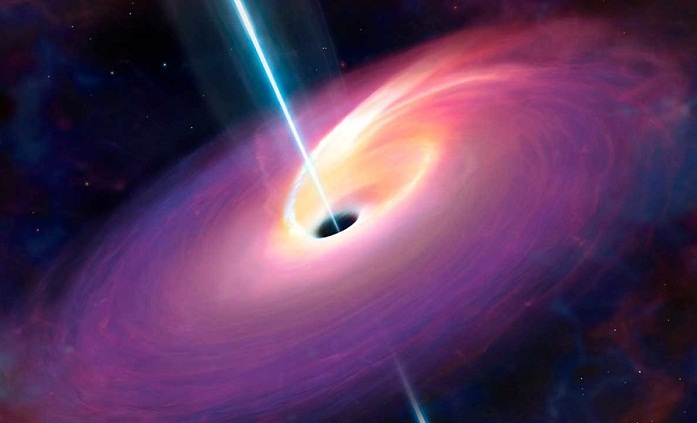But now it seems that collision may have been followed by a bright burst of gamma rays. NASA’s Fermi gamma-ray space telescope detected such an eruption just 0.4 seconds after LIGO’s gravitational waves arrived at Earth. It’s not clear whether the same event triggered both signals, but the Fermi team calculated that the probability of a coincidence was just 0.0022.
The problem is that no one expected such a bright gamma-ray burst to accompany a black-hole merger. Coalescing black holes orbit each other in a cosmic do-si-do, clearing out a region of empty space. According to models of gamma-ray bursts, isolated black holes can’t ignite them.
Strange signal
“Everything smells like a short gamma-ray burst in our signal,” says Valerie Connaughton of the Fermi team. “And that’s a real problem in a way – you don’t expect this signal from merging black holes.”
But when Avi Loeb of Harvard University saw the Fermi results, he realised he knew what might be happening. You could get a gamma-ray burst if the two black holes were enveloped inside a very massive star. “It’s sort of like a pregnant woman with twins in her belly,” he says. Once the black holes merged, the star would collapse and trigger intense beams of gamma rays.
For that to happen, the two black holes would have to have formed inside an extremely massive star a few hundred times heftier than the sun. As the star exhausted its nuclear fuel, its core began to collapse. Normally that would form a single black hole.
But if the star were rotating very fast, centrifugal force would stretch the collapsing core, shaping it into a dumbbell. Eventually, the dumbbell would snap into two cores, each of which would continue to collapse into its own black hole.
New ideas needed
“The only way to explain the Fermi signal is to surround the black holes with a lot of dense material, and the obvious way to do that, as in Loeb’s idea, is to put them inside a star,” says Dan Maoz of Tel Aviv University in Israel. “Maybe there are other ideas, but we need to think them up.”
It’s too soon to know whether this idea is right. Even Fermi’s results are in doubt: researchers analysing data from the European gamma-ray spacecraft, INTEGRAL, couldn’t corroborate Fermi’s finding, and concluded that the gamma ray signal is not real.
But even if this gamma-ray signal proves to be non-existent, there could be real ones in the future that coincide with a LIGO event, Loeb says. “We shouldn’t have a prejudice that black hole binaries are always silent in terms of their electromagnetic signature.” Astronomers should be on the lookout.
More about:
















































